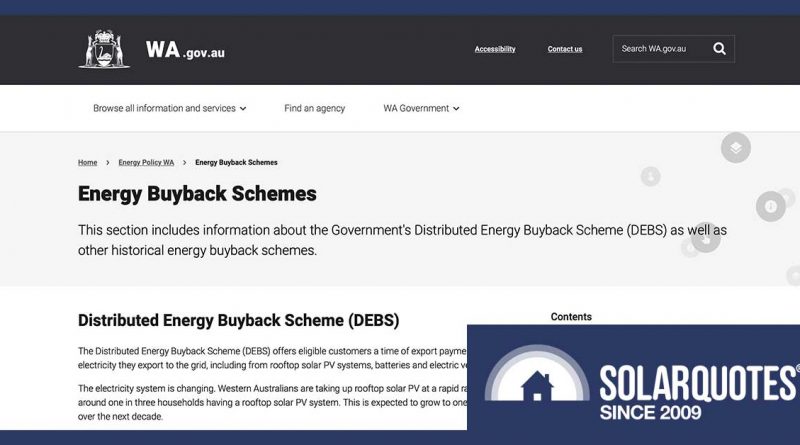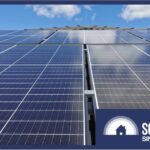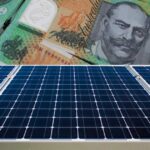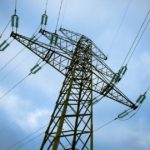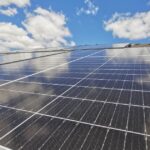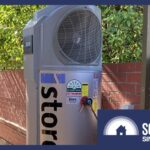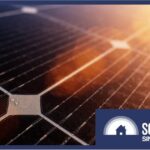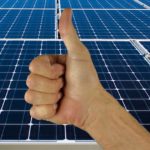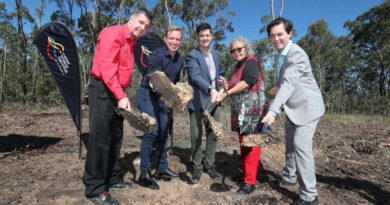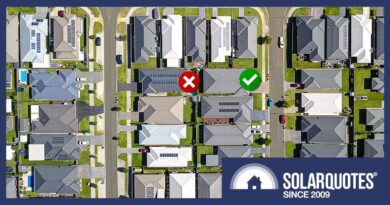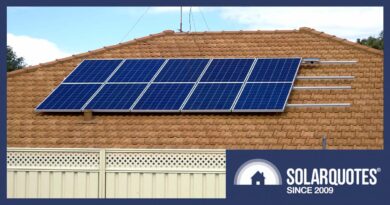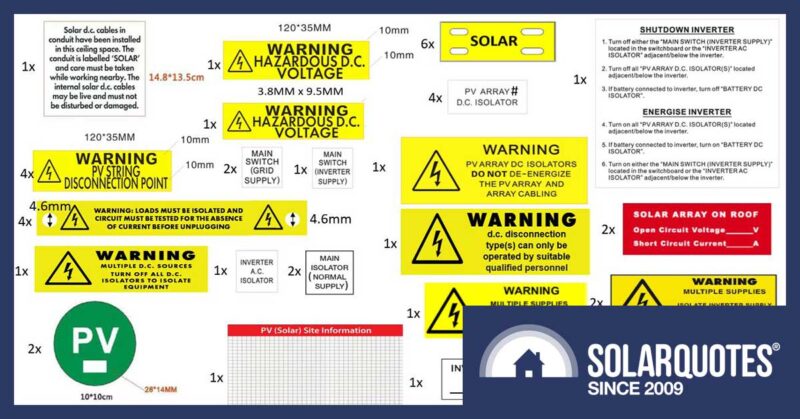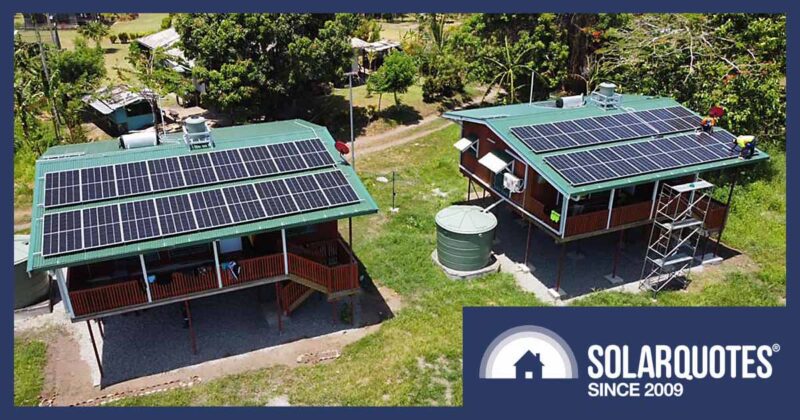Feed-In Tariff For New Solar Slashed In Western Australia — Only 3 Cents Before 3 PM!
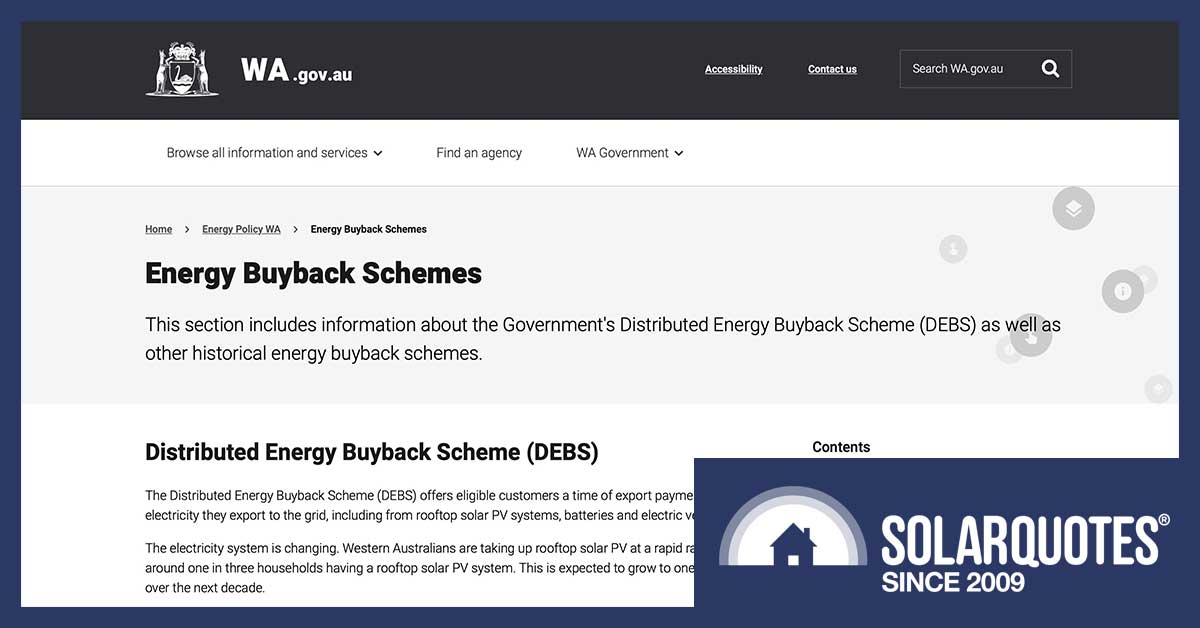
From yesterday (31 August 2020), new residential solar power systems installed in Western Australia will no longer receive the REBS or ‘Renewable Energy Buyback Scheme’ solar feed-in tariff of 7.135 cents per kilowatt-hour. Instead, it will receive the DEBS or ‘Distributed Energy Buyback Scheme’ that will instead pay:
- 3 cents for each kilowatt-hour of solar electricity fed into the grid for most of the day, and…
- 10 cents for each kilowatt-hour exported from 3:00 pm in the afternoon until 9:00 in the evening.
Because rooftop solar produces most of its energy in the middle of the day, that works out to an average of 3.8 cents for north-facing solar panels and approximately 4.4 cents for west-facing solar on a roof with a typical pitch of 22.5 degrees.
Systems currently on REBS that are upgraded will be shifted to DEBS.
While all new solar systems installed from yesterday will be required to receive the DEBS feed-in tariff, the new tariff won’t start until the 6th of November. Until then new solar installations will receive the old feed-in tariff of 7.135 cents per kilowatt-hour.
The new feed-in tariffs will also be paid for energy from home batteries or electric cars exported to the grid. This explains why the 10 cent feed-in tariff period extends until 9:00pm when the latest the sun sets in Perth is 7.26pm.
At the moment no specific information is available on if or how DEBS will be implemented in remote and regional WA.
While the cut to feed-in tariffs reduces the return from solar panels they remain a good investment for most households. While it modestly improves the return from batteries, it’s not enough to make them pay for themselves. As substantial payments may not be available from Virtual Power Plants any time soon in WA, the only way home batteries are likely to pay for themselves in the short term is if the state government provides a subsidy.
The feed-in tariff cut means solar households in Western Australia will be exploited even more than in the past. Given the high cost of providing electricity in WA, solar feed-in tariffs should be above the national average rather than the lowest in the country.
Solar Output Is Low After 3PM
Until now, north — or north-north-east — was often the best direction for WA homes to face solar panels, as it would maximize generation. I’ve put graphs below showing the average daily output for a 6.6 kilowatt, north-facing, solar power system in Perth for three different months:
- January is the month with the highest average generation and is on the left.
- March is in the middle and, along with September, is a month of average solar generation.
- June is the month with the lowest average generation and is on the right.
I’ve put a red line through the graphs at 3:00pm. As you can see, only around one-eighth of the system’s energy output occurs after that time:

The amount of energy generated after 3:00pm is higher for west-facing solar panels, but the difference is not large. The graphs below show average output for 6.6 kilowatts of west-facing solar on a roof with a 22.5 degree pitch:

Because so little solar energy is produced after 3:00pm, if all the energy is exported the DEBS solar feed-in tariff would average around 3.8 cents for north-facing solar and approximately 4.4 cents for west-facing solar.
It Makes Little Difference To Solar Panel Orientation
For people in Western Australia who are faced with a choice between facing solar panels north or west, my usual advice would be for them to consider their energy consumption and if it is not particularly high in either the morning or afternoon, face the panels north because they will generate more energy overall. In Perth, north-facing panels will generate around 14% more energy than west-facing ones. The average annual generation for the four cardinal compass directions for a new 6.6 kilowatt solar system in Perth are:1
- North: 11,309 kilowatt-hours
- West: 9,956 kilowatt-hours — 88% of north
- East: 9,901 kilowatt-hours — 86% of north
- South: 8,420 kilowatt-hours — 74% of north
The change in feed-in tariffs make west-facing panels more attractive than they were, but the difference between the average feed-in tariff received by north facing solar panels and west-facing ones only comes to around 0.6 cents per kilowatt-hour, which makes little difference. If a household with DEBS sent all the energy from a 6.6 kilowatt system into the grid, the total amount of feed-in tariff received over a year in Perth would be:
- North facing panels: $430
- West facing panels: $438
That’s only $8 more for west-facing panels. Because households self-consume some solar energy, the difference will be even less.
Most households use more energy in the afternoon than the morning, so my general advice on panel direction in WA would now be:
- West is best, but not by much.
- North is a close second.
- East comes third but could be best for homes with high energy consumption in the morning.
- South will produce the least energy but is still acceptable if panels can’t be placed in other directions.
North May Be Greener
Because north-facing panels will generate the most energy, they will offset more fossil fuel generation than west or east-facing ones. In addition, because their output will peak around noon, they should make life harder for WA’s coal power stations, as they can’t easily shut down in the middle of the day when demand for their power is low on sunny days. This may make north-facing panels greener than west-facing ones.
On the other hand, facing panels west or east will help integrate more renewable energy into the grid, make life easier for grid operators, and may limit future unfair moves against distributed solar power. This may lead to faster growth of renewable energy.
While I’d be tempted to stick it to coal immediately and face panels north on account of how my country recently caught on fire, that may not be the best long term decision so I’ll leave the choice in your capable hands. Or better yet, capable brain lobes.
Rooftop Solar — Still A Good Investment
The feed-in tariff reduction makes solar power a less attractive investment than it was, but it’s still a damn good deal for homes with unshaded roofs. While the average feed-in tariff for new north-facing solar will be nearly cut in half, in absolute terms it’s only a reduction of around 3.3 cents. As Perth is the sunniest capital and has the nation’s lowest rooftop solar prices, it’s not enough to stop solar power being a good deal.
A $5,000, north facing, 6.6 kilowatt solar system in Perth receiving the REBS 7.135 cent feed-in tariff will — according to the SolarQuotes Solar & Battery Calculator — have a simple payback time2 of around 3 years and 9 months.
If the same system was receiving the new DEBS feed-in tariff and its panels were facing north or west or split between those two directions, it would have a simple payback time of 4 years and 7 months.
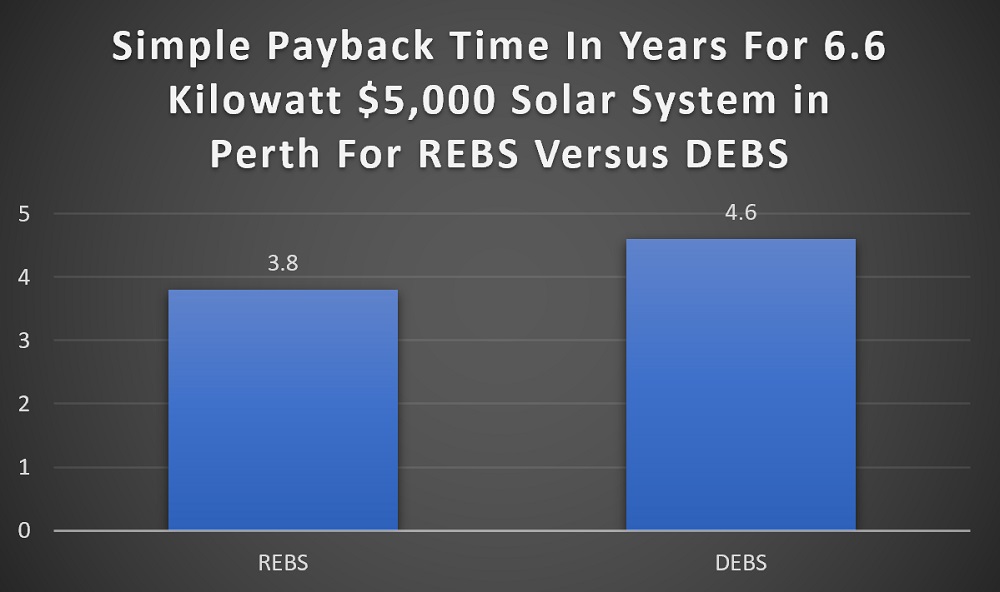
If a simple payback period of around 4 years and 7 months doesn’t seem like a good deal to you, I’d say you must have some pretty good alternate uses for your money.
Self Consumption Is More Important Than Ever
The lower feed-in tariffs get, the more important solar energy self-consumption becomes. This is because using 1 kilowatt-hour of solar electricity in place of grid electricity will reduce electricity bills by 28.8 cents, while exporting 1 kilowatt-hour of solar electricity will only reduce electricity bills by 3 cents for most of the day.
A Perth household with a 6.6 kilowatt solar power system will generally consume around 23% of its output themselves. However, a household where people often aren’t at home in the middle of the day may only consume 10%, while a household with above-average electricity consumption where people are usually at home during the day may use 50%. This has a large effect on simple payback times as the following graph shows:
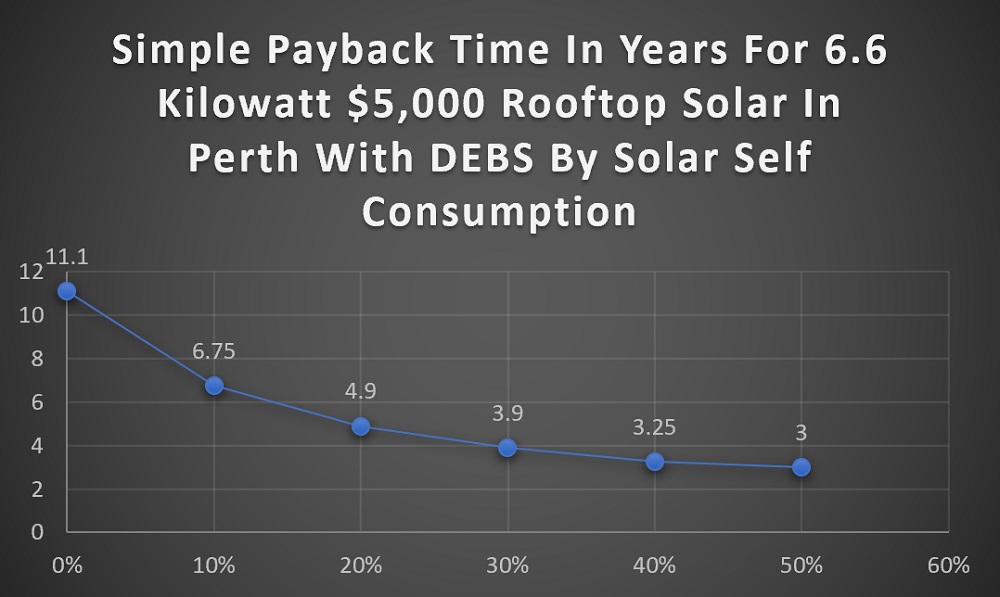
With DEBS a household will benefit considerably from shifting electricity consumption to the middle of the day when solar energy generation is high and the feed-in tariff is low.
Get Rid Of Gas
If I was making a living selling gas or gas appliances in WA I’d be terribly upset by the cut to solar feed-in tariffs. This is because it now makes even more sense for solar households to get off gas completely.3 I know some people prefer cooking with gas and while I can understand that, it’s not that big a deal. If you want to cook fast buy an air fryer and if you want to maximise your solar self-consumption buy a slow cooker and use it through the day.
An electric hot water system can act as a battery by switching on when the feed-in tariff is low, while having the advantage of being a hell of a lot cheaper than a battery. This can be done simply by using a hot water system with a small element and putting it on a timer, or if you don’t mind spending more you can get a solar hot water diverter.
Consider Big Solar For High Electricity Consumption
It’s only possible to get a solar feed-in tariff in WA if your solar inverter is 5 kilowatts or less and DEBS doesn’t change this. You know, I’m starting to think the only good thing about DEBS is the fact it’s named after my favourite spy movie:
In Western Australia, it’s not permitted to get around this by installing a larger inverter and export limiting it to 5 kilowatts. As solar panel capacity can be one third larger than inverter capacity the largest solar power system a home can have and receive a feed-in tariff is 6.66 kilowatts.
But because the solar feed-in tariff for new installations is now so low, it is possible some homes with exceptionally high daytime electricity consumption may be financially better off getting a large solar system and receiving no feed-in tariff. While this won’t financially help normal households, those with massive electricity consumption should consider it.
Businesses aren’t eligible for REBS or DEBS and so can never receive a feed-in tariff. As a result, they should base the size of solar systems on their expected self-consumption or, alternatively, on how environmentally gung-ho they are.
It Won’t Make Batteries Pay
If an average WA household receiving the REBS 7.135 cent solar feed-in tariff has a 6.6 kilowatt solar system and installs a battery system such as a Tesla Powerwall 2 then, according to our Solar & Battery calculator, it would have a simple payback period of 22 years. With DEBS this falls to only 20 years.
As this is much longer than the battery can be expected to last, the cut in the solar feed-in tariff is not enough to make batteries pay. The calculation doesn’t take into account time-of-use tariffs, but their benefits are not enough to make them worthwhile. Unless a battery can be installed for a total cost that is much less than that of the Powerwall 2 per usable kilowatt-hour, they’re not likely to be financially worthwhile for any remotely normal household.4
Why Are WA Feed-in Tariffs Being Cut?
There are two reasons why WA has introduced DEBS:
- To improve grid management, and…
- To help fill a giant money hole.
Reducing the feed-in tariff to 3 cents for most of the day and increasing it to 10 cents after 3:00 pm under DEBS will reduce the amount of solar energy supplied to the grid when solar generation is high and increase it in the late afternoon when solar output drops and electricity demand increases. One way it does this is by slightly reducing the amount of rooftop solar installed and increasing the number of west-facing panels. But the main way is through encouraging solar households to consume more electricity before 3:00 pm and less after.
Because the solar feed-in tariff is trivial before 3:00 pm, solar households will have more of an incentive to shift electricity consumption to the middle of the day and get it over with before it increases.
The second reason feed-in tariffs for new solar have been cut is so the state can underpay solar households for the clean energy they provide and use it to help pay off the massive amount of debt their electricity sector has acquired, mostly from subsidising fossil fuel generation.
DEBS Is A Ripoff
Solar households in Western Australia are not being fairly compensated for the solar energy they provide to the grid under REBS. DEBS just makes this worse.
At the moment I don’t have the time, energy, or Kafka tolerance required to work out what a fair feed-in tariff for WA may be. But if Victoria considers a minimum feed-in tariff of 10.2 cents to be fair value for this financial year, then I don’t see how an average of under 4 cents could be fair in a state where the cost of providing electricity to end-users is likely to be considerably higher.
Solar penetration is not sufficient to explain the difference, as it’s higher in both Queensland and South Australia where feed-in tariffs average considerably more. WA does have a standalone grid which increases the challenges of integrating renewables, but this also contributes to high costs which increase the value of renewable energy.
If solar feed-in tariffs were reduced by a modest amount to fund grid upgrades that would allow for greater penetration of distributed solar power, that wouldn’t be unreasonable — but that’s not what’s happening. Instead, solar power is being used to subsidise the rest of the grid to help make up losses resulting from subsidising electricity in the past. Electricity that was mostly generated from fossil fuels. We should be transitioning to clean energy as rapidly as possible and it is foolish to slow this process by making clean energy pay for the past mistakes of dirty energy.
Footnotes
- Update 1st September 1:00am: PVWatts was down yesterday, or at least it was for Australia, so I couldn’t give you its figures for Perth which are notably different: North 10,843 kilowatt-hours, West 9,144 kilowatt-hours (84% of North), East 9,972 kilowatt-hours (92% of North), South 8,027 kilowatt-hours (74% of North). ↩
- Simple payback time is how many years it takes for savings on electricity bills to equal its cost. It’s called “simple” because it doesn’t attempt to take account of capital costs. ↩
- Despite gas prices being around record lows, the price for WA households recently increased by around 16%. ↩
- Of course, people can install batteries for non-economic reasons if they want. ↩
Original Source: https://www.solarquotes.com.au/blog/wa-feed-in-tariff-slashed/

